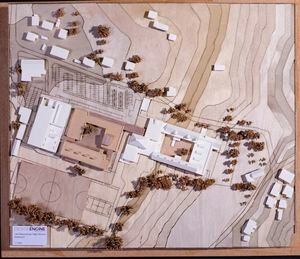Time to pause and review
I HOPE it is still early enough in January to wish you a happy new year and I hope you had a great Christmas.

I start my first column of 2020 by holding my hands up and saying: ‘I may have been wrong.’
What I am referring to is the proposed two-school model (sorry, one school on two sites) – I may have been wrong.
Whilst I retain reservations about the social impact of large schools, that schools of the proposed size are out of scale in Guernsey, I did not have significant concerns about the ability of a large school to actually deliver a good education. On the basis that they operate effectively in the UK, I thought they should be able to do so here.
However, having considered all of the recent reports and comments, I hold up my hands and say that perhaps I was wrong to consider such large schools could work effectively in Guernsey.
So, what has made me question this view?
The first and most significant were the comments from the teaching unions – it is a real concern when professional educationalists are questioning the proposals.
In addition, it seems that every time more details about the two-school system are released, more and more problems and concerns are found.
The latest is the Arup report identifying traffic concerns around both schools, but another example is that a report ranking La Mare as a better site than Les Beaucamps was not released until after the States debate. I am amazed at P&R’s silence relating to such a key document not being available when the States made their decision – a document which casts doubt on that very decision.
Despite these issues coming to light, and when educationalists are expressing real concerns, the Education committee is still committed to progressing at speed, repeating the mantra that the States have debated this twice and we are part-way through the process so we must continue.
OK, I know that the plans have been debated twice in the States – but, and this is an important but, never in their full form, with all of the information which is just now coming to light.
The first debate was without any real information – a leap of faith, as Deputy Trott described it – while last September’s debate also had little in the way of details – remember the scathing report from Scrutiny?
It seems that there are now two entrenched political positions and never the twain shall meet, with the Education committee convinced it is the best option. Perhaps they are right, but just because they believe it is the best does not mean it actually is the best of the two options.
It is true that both the two-school and three-school models have advantages and disadvantages compared with each other and I admit that I do not know which of the two systems is best for Guernsey. My worry is that neither do any of our deputies, because neither of the debates had all of the information about the two-school model so a full comparison between the two has not happened.
This whole process seems to have been rushed in order to get to the point of no return before this year’s election.
We are in a situation where once the schools are built there is no going back. The decisions being made now will set the basis of our education for the next 50 years.
These are not once-in-a-generation decisions, but once-for-many-generations decisions.
I have never been wedded to either the two-school or three-school models. What I, and I think most people, want is an affordable system which will provide the best education for our students.
Unfortunately, as more and more details of the two-school system are released, more concerns are raised. This project should not be rushed and now that the actual, practical details of the two-school model are becoming known we should take stock and review both options against each other so that we put in place the option which really is the best for the island.
Current and future students deserve this.
I worry that Education have a condition which airline pilots call ‘get-there-itis’, the formal term for which is ‘plan continuation bias’.
This is where people are so committed to a plan that they do not give sufficient credence to mounting problems and concerns. Everything starts OK, but there is a problem, so you adjust the plan for that problem; then another issue arises, but its still OK, the plan can again be adjusted; then another, and another, and another. Bit by bit, concerns are raised and individually dealt with but without stepping back and objectively looking at the whole new situation. All of a sudden the plan has changed and it’s not what was expected – it’s at best sub-optimal, at worst unworkable.
An example of this was the grounding of the Torrey Canyon. The oil tanker’s captain had the plan to go to Milford Haven but apart from one questionable decision early on, the sinking was the result of a lot of smaller bits of bad luck which arrived one by one, ultimately resulting in the disaster many of us remember.
I appreciate that delay will create some short-term operational problems, but it’s better to deal with those now to ensure we avoid 50 years of problems.
I know there is a risk from a new government after the election, but if the two-school model is effective, then it should stand up to additional scrutiny. More importantly, a like-for-like comparison should identify which of the two options is the better for Guernsey – surely our students deserve this?
It is time for Education to show some humility and pause and review.
It is time for P&R to show leadership and call for a pause and a review. It is more important to get it done right than to get it done right now. We do not want our education system to hit the rocks.
One final thought – I was told that it was Arup which advised the then Environment Committee regarding the reduction of the Town seafront to a single lane of traffic.





